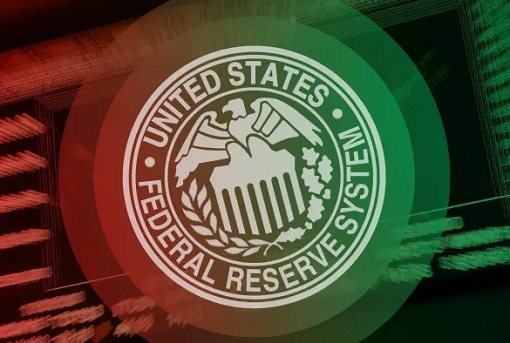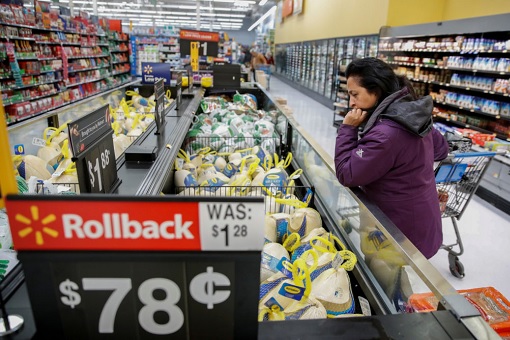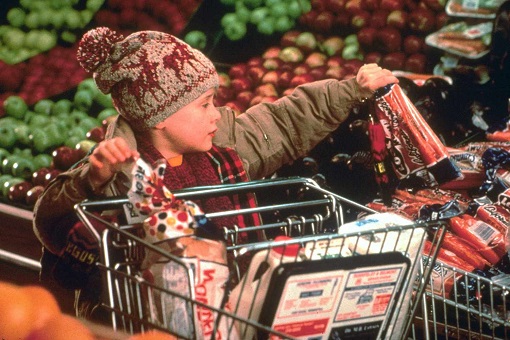The Christmas rally came early for the Wall Street after Dow Jones reached a record high above 37,000 on Wednesday after the FOMC (Federal Open Market Committee) indicated it may cut rates three times next year. The unanimous decision means the interest rate or the benchmark overnight borrowing rate will remain in the range between 5.25% and 5.5% for now.
By holding its key interest rate steady for the third straight time, the Federal Reserve was declaring a victory in the war against inflation, which has seen a continuous 11 hikes – pushing the fed funds rate to its highest level in more than 22 years. Thanks to the Ukraine War, which triggered a chain reaction from high energy prices, the U.S. inflation rate had spiked to a 40-year high in mid-2022.
Believing the worst is over, Chairman Jerome Powell and his boys are sharing the roadmap of how the interest rates would be slashed. The Fed estimated that the benchmark rate will fall to 4.6% next year – suggesting three rate cuts in 2024. In 2025, the central bank has indicated another four cuts to lower rates to 3.6%. Three more reductions in 2026 would take the fed funds rate down to between 2%-2.25%.

However, analysts and economists were more bullish, betting that the Fed could adopt a more aggressive rate cut next year with 1.5% points reduction – double that of the FOMC’s plan. Fed officials see core inflation falling to 3.2% in 2023 and 2.4% in 2024, then to 2.2% in 2025. Ultimately, it will hit the 2% target in 2026. At least, that was what the Federal Reserve believed it could achieve.
Interestingly, there was an acknowledgement that the economy “has slowed”. Officials have also stressed their willingness to hike rates again if inflation suddenly goes up. But it doesn’t matter whether the Federal Reserve could pilot the U.S. to a “soft landing”. The damage has been done even if inflation returns to the Fed’s 2% target without causing a recession.
Americans, as well as consumers around the world, are still seeing prices for everyday items remain higher than they were before the pandemic. There is very little meaning to the claims that inflation has slowed down. The price of a home is 30% higher than it was in 2020. The price of eggs is almost double what it was in 2020, and prices won’t come down. That’s what consumers see and feel.

For example, the cost of a dozen eggs averaged US$2.06 in September compared to US$1.45 in 2020. Meanwhile, the average price for a single-family home was US$394,300 in September compared to US$311,800 in 2020. And despite sinking gas prices, underlying price pressures – from apartment rents, restaurant meals, auto insurance and many other services – remained stubbornly high.
Sure, most economists expect the rate of price increases to keep slowing in the coming months. What people want is for the all the prices to drop to where they were before the Covid-19, or before the Ukraine War. Prices of goods have gone up and don’t come down even if the inflation can be tamed. But the salaries or wages did not go up accordingly to match the inflation rate.
Surveys show that Americans are mostly gloomy about the economy, despite steady job growth, a low unemployment rate and falling inflation. The nasty inflation was when the money in your wallet loses their purchasing power as prices surge. Prices displayed on the items you want and need are still higher today – despite easing inflation – than they were before the lockdown.
Get real, prices are not falling. They’re just going up slower than they were six or twelve months ago. In Malaysia, that plate of RM9 chicken rice isn’t going back to RM6 it used to be in 2020. Hilariously, the government, obviously for political reasons, wants and hope you will celebrate that inflation is falling. In other words, we’re all still suffering with much higher prices no matter what the latest inflation report says.
To get an idea of the actual impact of inflation, the movie “Home Alone” is a great example. In the 1990 comedy classic, an 8-year-old Kevin McCallister was mistakenly and accidentally left home alone by his family and has to protect the house from two bumbling burglars. Left behind in his Chicago home when his family flies to Paris for the holidays, the boy had to go to the grocery store.
He bought a basket full of groceries including a half-gallon of milk, orange juice, Wonder Bread, a Stouffer’s frozen turkey dinner, toilet paper, Snuggle dryer sheets, Tide liquid laundry detergent, plastic wrap, Kraft macaroni and cheese, and a bag of army men. Kevin paid a grand total of US$19.83 with a US$1 off coupon for the orange juice. Looking back, it was damn cheap.

If Kevin were to play the role in 2022, that same basket of groceries would have cost around US$44.40 based on a shopping trip by a West Virginia mother. That’s a 123.9% increase. However, this year (2013), thanks to inflation, Kevin would have to fork out a whopping US$72.28 for his provisions at a Chicago store – another whopping 62.8% increase in just one year.
Essentially, since 1990, the inflation based on Kevin’s groceries has skyrocketed 264%. And the price won’t come down even if the government declares victory over the war against inflation. Of course, the government officials will not spook you with this real-life inflation number. Instead, Biden will tell you how the government managed to bring it down to 3.1%.
Forget about interest rate cuts, slowing inflation, record high stock market and whatnot. To the ordinary Joes and Janes struggling to put food on the table, those numbers are meaningless. Their purchasing power has been greatly reduced. The inflation isn’t dead. They are still alive and kicking. Do you know how much is a plate of chicken rice in 1990?

Other Articles That May Interest You …
- India Bans Rice Export Again – Why Global Food Security Could Get Ugly And Trigger Inflation
- OPEC’s 1.15 Million Barrels Cut Could Push Oil To $100 – Saudi Adding Fuel To Inflation And Repeat The Energy Crisis
- Inflation To Escalate And Recession To Begin – All Hell Will Break Loose After Ukraine’s Defeat In Bakhmut
- Year 2023 – Food Crisis To Worsen As Fertilizer Shortage, High Price, Inflation, Interest Rate Hikes Continue
- Endless Inflation – Two More 75 Basis Point Hikes This Year As Wall Street Shocked By September 8.2% Inflation
- Investors Got Burnt Again – Dow Lost 1,200 Points, Fed Could Raise Rates By 100 Basis Points As August Inflation Hit 8.3%
- The Worst Is Not Over Yet – Why Inflation & Recession Are Still Alive And The Global Economy Is Still In Bad Shape
- Jihad Task Force Against Inflation – Bro, That’s Overkilled Even By Arab Standard
- Too Little Too Late – Bank Negara Raises Interest Rate To Rescue Tumbling Ringgit Under Pretext Of Fighting Inflation
- From Cheap Money To Ukraine War – How The U.S. Screws Up Its Inflation, And Scrambles To Prevent A Global Recession

|
|
December 14th, 2023 by financetwitter
|


|

|

|

|

|

|




























Comments
Add your comment now.
Leave a Reply